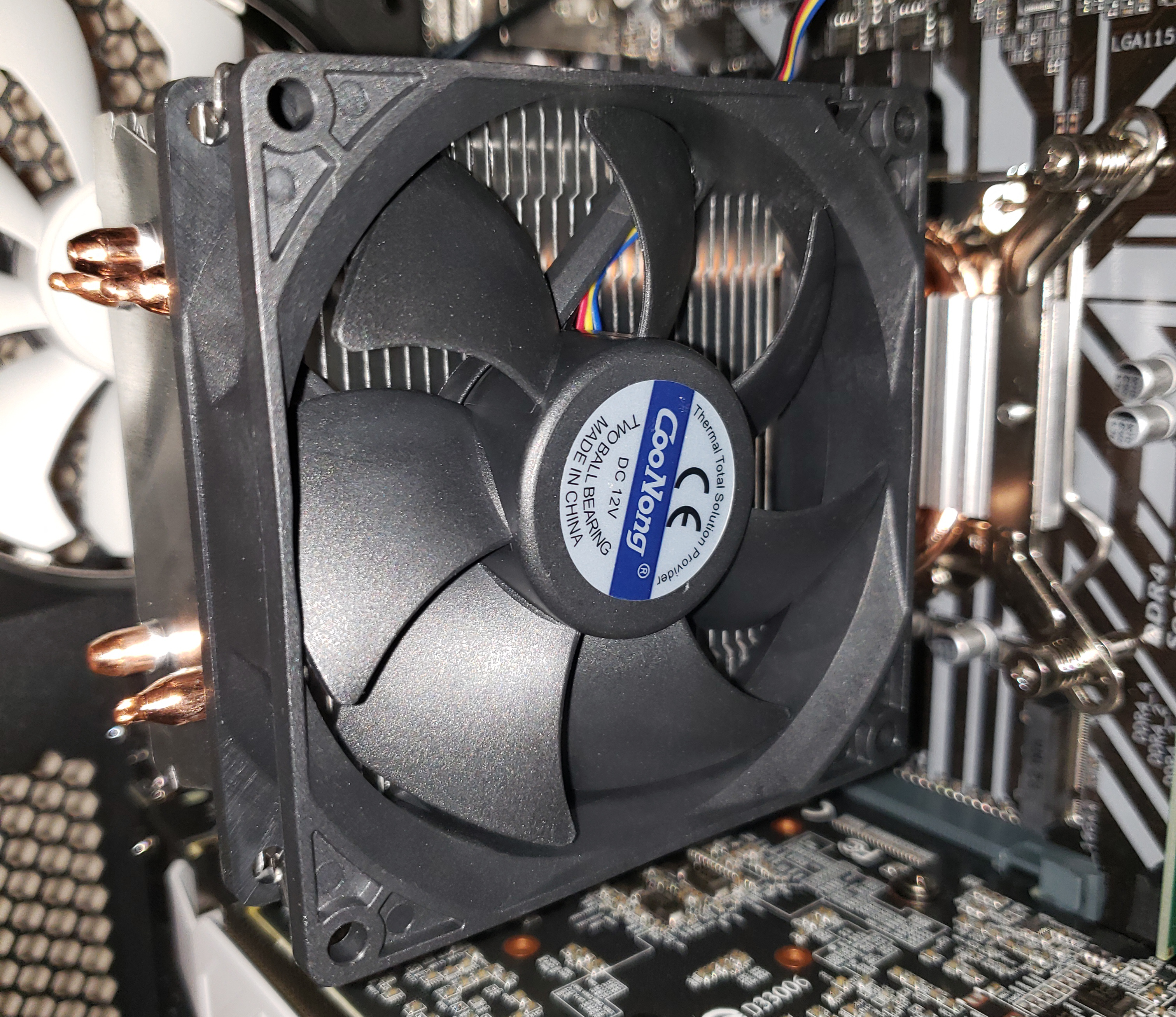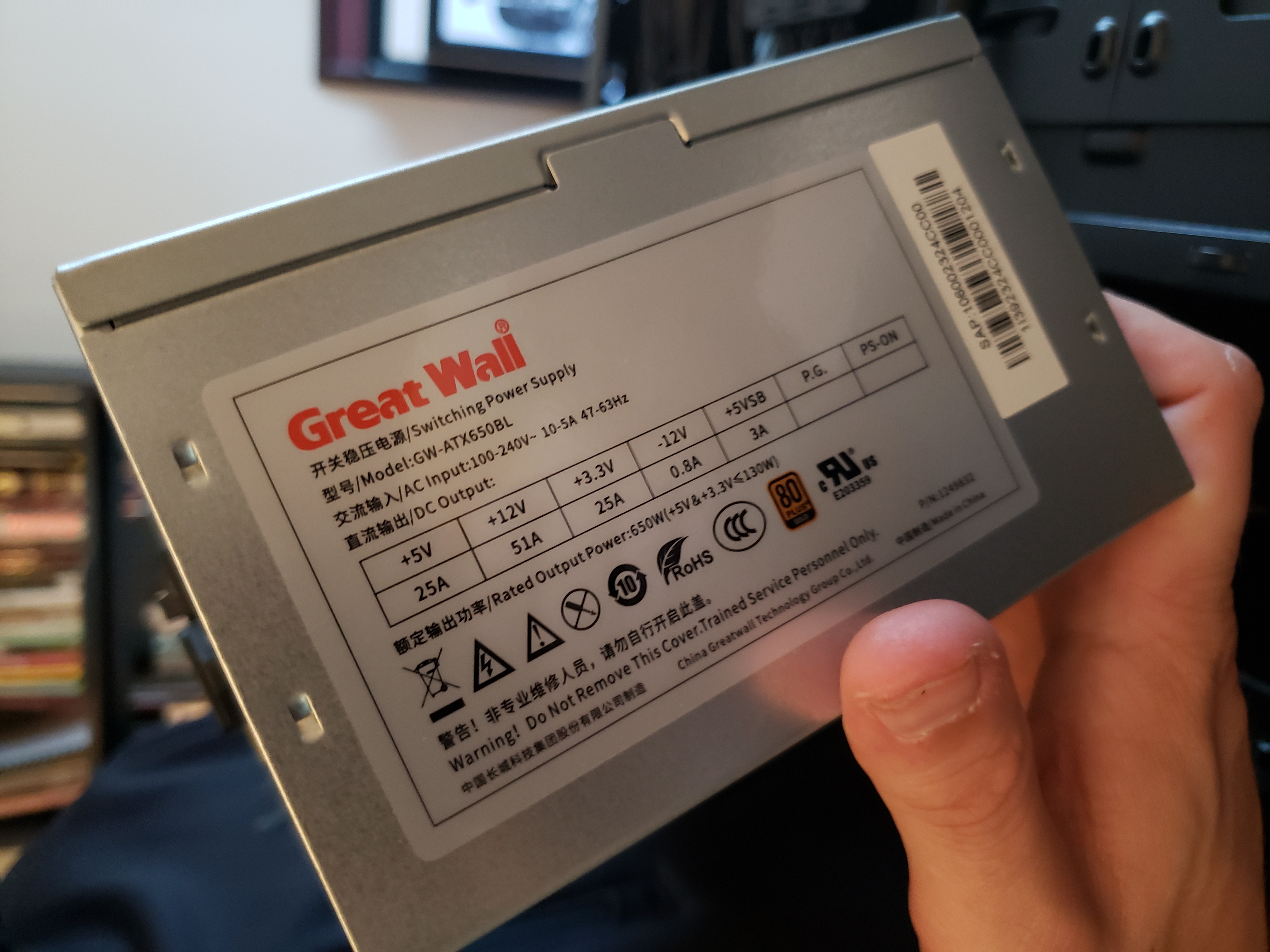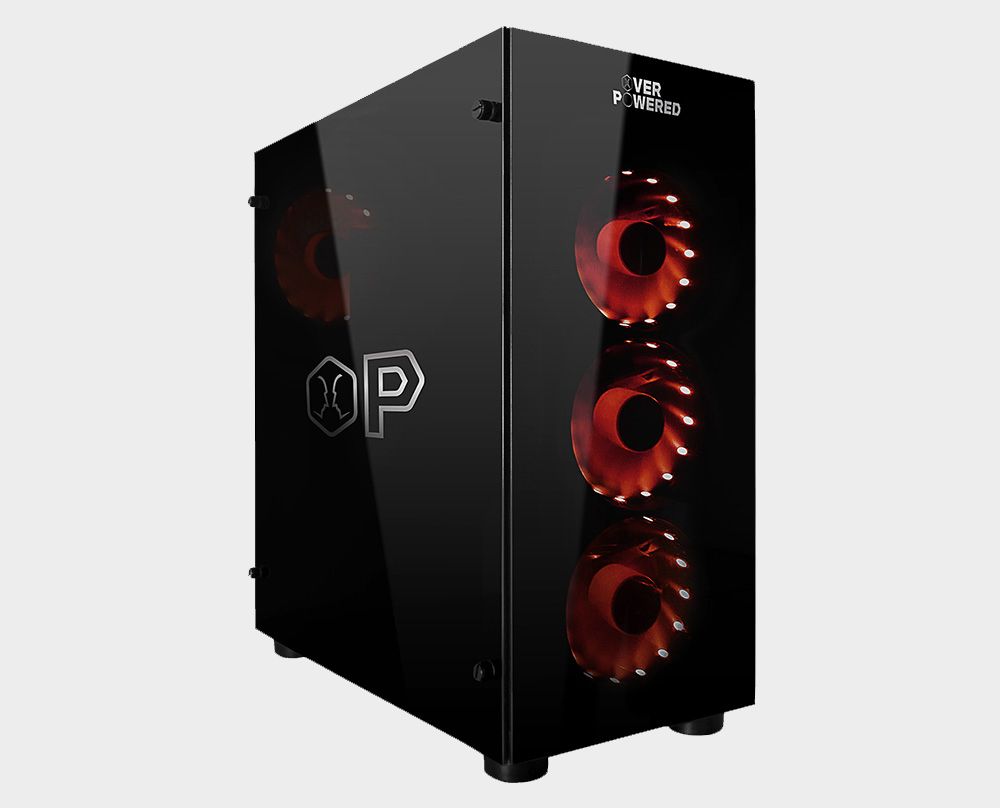Our Verdict
The Overpowered DTW3 utilizes some good components when absolutely neccessary, but skimps on the rest.
For
- Decent specs for the price
- Remote-controlled RGB-lit fans
Against
- Terrible air flow
- Cheap PSU and CPU cooler
PC Gamer's got your back
I had a smidge of hope for Walmart’s line of gaming desktop PCs. I mean, I have ceramic dishes that I bought 12 years ago from Walmart that have lasted all this time without a single chip, so maybe Walmart could actually create a decent, entry-level gaming PC. The result is something that was put together with competence, but shortchanges itself with faulty logic. Let’s start with the good, if slightly weird, things about the Overpowered DTW3.
GPU: Gigabyte GeForce GTX 1080 Ti
CPU: Intel Core i7-8700 6-core/12-thread
Motherboard: Gigabyte H370M DS3H
RAM: Adata 32GB (2x16GB) DDR4-2400 RAM
Storage: Adata 512GB SSD, Toshiba 2TB HDD
PSU: Great Wall 650W Gold
CPU Cooling: CooNong
Dimensions: W: 8.1" H: 17.5" L: 16.0"
Warranty: 2 years
Even though Nvidia has discontinued its GTX 1080 / 1080 Ti graphics card line, the DTW3 includes a GTX 1080 Ti, which can retail for upwards of $1,000 at the moment. But in terms of gaming performance, the new RTX 2080 is effectively a drop-in replacement, and we'll probably see Walmart make that switch at some point (unless it stockpiled a heap of GTX cards).
The GTX 1080 Ti is still a great card, as it can handle many graphically demanding games on ultra in 1080p beautifully. Coming in at a 3DMark benchmark score of 22,834, this system averaged, according to the in-game benchmarks, 110 fps in Shadow of the Tomb Raider, 101 fps across the gambit in Total War: Warhammer II, and even topped out at 72 fps in Tom Clancy’s Ghost Recon: Wildlands.
1440p gaming shouldn't be a problem either, though 4K is a bit of a stretch without dropping settings in most games. I don’t have the right monitor, but 3DMark scores suggest the DTW3 will struggle at times with flawless 60 fps gaming on ultra for 1440p or 4K. Testing on Fire Strike Extreme (1440p), the DTW3 averaged a score of 13,115, which drops to 6,930 on Fire Strike Ultra (4K).
Considering the cost of the 1080 Ti cards now, you'd be better off building your own rig with a RTX 2080 if you want better performance at higher resolutions, depending on the games you play.
As for the processor, maybe Walmart wasn’t expecting its customer base to do a lot of overclocking, so including an Intel Core i7-8700 into this build is a wise decision. Although the current retail price difference between an i7-8700 and an i7-8700K can be as a low as $50 (and another $35 minimum for the cooler), it’s Walmart, and that would mean a more expensive motherboard to go with an unlocked CPU.
The i7-8700 is still a fine chip to use, regardless. Overclocking only gives a modest performance boost in most cases, and Walmart isn't going to want to deal with support issues. The system does use an underwhelming CPU cooler from an unknown brand. Thank goodness for a locked processor, because it doesn’t seem up to the task of overclocking.
The good news is that the i7-8700 is only a 65W TDP part, and it still hits high turbo clocks. When I ran benchmark tests in Cinebench, the multicore test averaged 1,313, and the single core test averaged 200, which is only slightly lower than our custom PC i7-8700K stock results where the CPU ran at 4.3-4.7GHz. That means the i7-8700 is getting far more than its base clock of 3.2GHz. Walmart, you win this round.
The DTW3 model has a Gigabyte H370M DS3H motherboard, which is designed to support DDR4 RAM up to 64GB 2666MHz, not that you would need that much memory solely for gaming. But that makes me wonder why Walmart decided to add 32GB of DDR4 2400MHz RAM to this model. 32GB is fairly unnecessary, especially for this kind of build, but the motherboard itself is a sound choice considering the locked CPU. Maybe the ‘overpowered’ moniker is referring to the RAM, but this is one of those weird logic points for the DTW3. For a gaming PC, there are far better upgrades than going from 16GB to 32GB RAM.

The SSD is a 2.5-inch SATA instead of a M.2, which I assume is another cost-saving measure, considering the motherboard comes equipped with two M.2 slots. The SSD and HDD are also partitioned strangely, split up into five different drives with at least 465GB allocated to each. With an SSD and HDD combo, I’ve normally seen both of those as just two separate drives, maybe the HDD partitioned into two on occasion, but five? It’s weird and a throwback to the way some people used to do things before Windows XP. (Thankfully, Disk Management can wipe the extra partitions and grow the single HDD into a larger capacity that fills the whole drive.)
Now for the bad and the ugly.
The big faux pas is the chassis. There is one air vent and one fan to draw hot air out the back and a quarter-inch gap on the right side of the case to draw in cool air via three fans. But that gap isn't nearly large enough to draw in cool air, so hot air gets recirculated inside and rises to the top of the case—and oh wow, can the case get hot. You won’t burn yourself if you touch the top, but it’s enough to be concerned.
Playing the games we normally use for our in-game benchmarks made the case the hottest, of course, but playing something like World of Warcraft left the case reasonably cool. However, since the DTW3 is designed to handle more graphically intensive games, not having proper airflow seems like a major oversight, especially since the DTW3 is supposed to be Walmart’s high-end model of their gaming desktop series.

Next is the PSU—it looks terrifying. Great Wall is a brand that not many are familiar with, myself included. This one is certified 80 Plus Gold however, which makes me feel less scared of it blowing up inside the case. Great Wall makes PSUs for many other brands, but it's missing the trust factor of Corsair or Seasonic and clearly loses points for styling, and probably other elements as well.
Skimping on the PSU is generally not something you want to do if you’re putting a significant amount of money toward a gaming PC, but I did not get any indication that the PSU was any less efficient. There are some reviews of the DTW2 and DTW1 models that mention the PSU isn’t gold rated (the lower end models apparently use Bronze PSUs), but this model gets an upgrade. I still wouldn't put a Great Wall PSU in my own build, though.
Closing thoughts
When the Overpowered DTW3 model was first announced, Walmart was asking a ridiculous $2,099. Currently, the price has dropped to $1,699, which is much more reasonable, but not enough to make up for the cheaper components. If you go the DIY route, you can put together an equivalent system for around $1,600, or you could pick a better case and PSU and still pay less (and maybe ditch the 32GB RAM).
In terms of performance, the DTW3 holds its own against other well-established prebuilt brands, but that’s really due to the choice of GPU and CPU. If you’re shopping around for a high-end gaming PC that takes all its components seriously, look elsewhere, or just build a rig yourself. You get what you pay for—but hey, at least our model was shipped with all the cables plugged in correctly.
The Overpowered DTW3 utilizes some good components when absolutely neccessary, but skimps on the rest.



